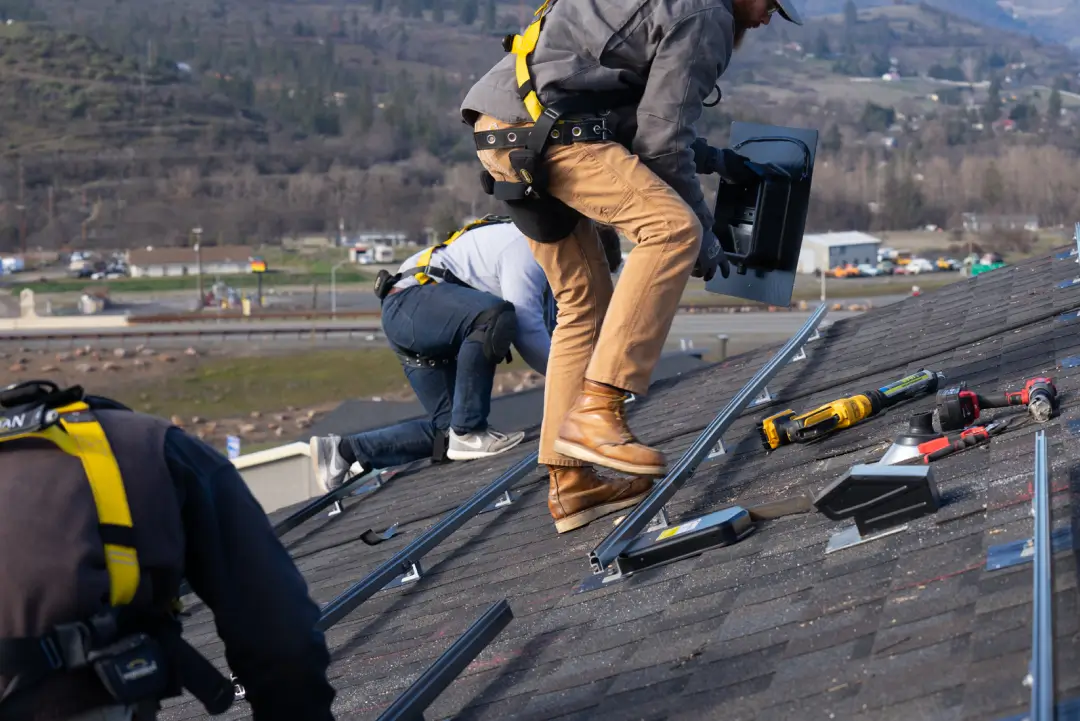Switching to solar is an important decision to make. But if your home isn’t already optimized to save money on energy, you could be leaving yourself open to still losing money.
With just a few home renovations, solar will be an even better investment. Whether you just purchased your home or you’ve had it for thirty years.
Updating and Cleaning Your HVAC System
The average HVAC system’s vent filter is supposed to be swapped out every one to three months: yet many people leave these untouched for years on end. This can lead to breathing issues and having your heating and cooling system running far more than it needs to.
Beyond replacing your filters, talk to a professional who can check to make sure your system is running how you need it to.
If they can sign off that it’s behaving correctly, you’ll be able to rest easy knowing it won’t suck up all of the money you’d be saving swapping to solar otherwise.
Repairing or Replacing Your Roof
Your roof is like the lid on a thermos. When it’s in good condition, it can keep the temperatures inside sealed: but when it’s older and leaky, it’s no good.
Your roof is something you should especially be considering replacing if you’re switching to solar, since an out-of-date roof might not be as good of a canvas for solar to be secured to, and when you eventually replace your roof, you’ll have to work around your solar as well.
Instead, replace your roof with something like metal before making the switch. This will protect you in the long term and will ensure you can take the time to replace the house soffit and fascia and seal your roof all the way before you have to add solar.
Sealing Windows and Doors
Even a fraction of an inch of a gap beneath a door or in a window can drastically ruin your heating and cooling bills. Nobody wants to deal with the strong spike in cost at the peak of summer or when winter hits its stride.
To check where you may have air leaks, walk around your home with a lit candle, and watch to see if the flame pulls strongly towards or away from any entrances while they’re supposed to be closed.
If it does, applying sealant is a good first step, but you should also consider either weatherstripping the entrance or replacing the door or window altogether.
Replacing Your Older Siding
How old is your siding? Siding lasts an average of twenty to thirty years, depending on what it’s made out of.
This part of your home is a large part of ensuring your property is protected from the elements and able to keep the heat or cold air you want inside.
Look into maintenance-free siding options, which can allow you to have minimal upkeep needed while the siding itself lasts for thirty to fifty years. This also gives you the chance to give your property a fresh face and increase your property value.
Checking Your Home’s Insulation
One of the largest reasons homes will struggle to keep warm or cool depending on the season is a lack of good insulation. Good insulation will give your home a buffer between the outside world and the interior of your property.
If you don’t update your insulation, you could be dealing with heat loss, moisture making its way into your home, and even insect life deciding to nest within the walls of your home.
Check when your insulation was last swapped, and make this change.
Replacing Your Older Appliances
One of the best ways to improve your property’s energy efficiency is to update your appliances and add ones that are built to use as little electricity as possible while still successfully doing what they’re built to do.
The appliances that can waste the most energy if not updated are fridges, freezers, laundry washers and dryers, and dishwashers.
If you let these stay outdated, they’ll continue to drain and use up all of your energy: not allowing you to save much if you switch to solar.
Checking Your Wiring and Energy Use
Your wiring and energy use is a big deal! If your home’s wiring hasn’t been updated since it was built in the 1980s, you could be leaving your property open to issues that may lead to fire or outages.
Have a professional electrician walk through your property, look at what needs to be done, and give you an idea of what your property needs. If you’re worried about their quote, talk to a few different contractors before hiring one.
You don’t want to switch to solar if your home is an electrical fire waiting to happen.
Home Renovations and Solar Ensure a Great Investment
Whether this is the first time you’ve installed solar on a property, or you’re a seasoned pro who wants to make the most out of your property, it’s vital that you take your time.
Giving your home these updates ahead of time will ensure your solar starts off on the best foot.
Ready to go solar now? Find out if your roof qualifies for Purelight’s $0 down solar.
![]() Susan Holmes is a contributor to Innovative Building Materials. She is an editor and content writer for the environmental industry. Susan is focused on helping fellow homeowners, contractors, and architects discover materials and methods of construction that increase property value, maximize energy savings, and turn houses into homes.
Susan Holmes is a contributor to Innovative Building Materials. She is an editor and content writer for the environmental industry. Susan is focused on helping fellow homeowners, contractors, and architects discover materials and methods of construction that increase property value, maximize energy savings, and turn houses into homes.





